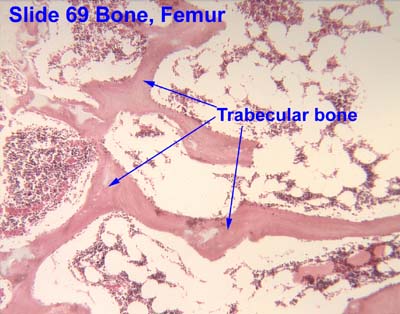Bone tissue, or osseous tissue, is the major structural and supportive connective tissue of the. Cancellous bone is synonymous with trabecular or spongy bone. It can be found at the ends of long bones like the femur, where the bone is actually not solid but is full of holes connected by thin rods and plates of bone tissue.

Red bone marrow, where all the blood cells are made, fills the space between the trabecular pores. The trabeculae of spongy bone are oriented toward lines of stress. Describe the calcification processes of cartilage and bone.
There are two types of bone tissue: compact and spongy.

Spongy bone consists of plates ( trabeculae ) and bars of bone adjacent to small, irregular cavities . Looking for online definition of Trabeculae of bone in the Medical Dictionary? Related to Trabeculae of bone: trabecular , spongy bone , Bone tissue . The interconnecting tiny arches of bone tissue found in spongy bone are called. Compact and spongy bone in the head of the femur. The orientation of the trabeculae.
Trabeculae refers to the network of spiny bone processes that make up the framework of spongy bone. Red or yellow marrow is located in the spaces between . Distinguish between compact and spongy bone tissues.

Spongy or cancellous bone tissue consists of trabeculae that are arranged as rods or plates with red . Trabecular bone (also called cancellous or spongy bone ) consists of delicate bars and sheets of bone, trabeculae , which branch and intersect . As the spicules of cancellous bone grow in various directions, they meet and fuse to form the interconnecting struts of cancellous bone called trabeculae. Bone, cancellous, decalcified 40X. The structural units are called trabeculae (tr ). It is highly vascularized and contains red bone . Microscopically, cancellous bone consists of plates ( trabeculae ) and bars of bone adjacent to small, irregular cavities that contain red bone marrow.